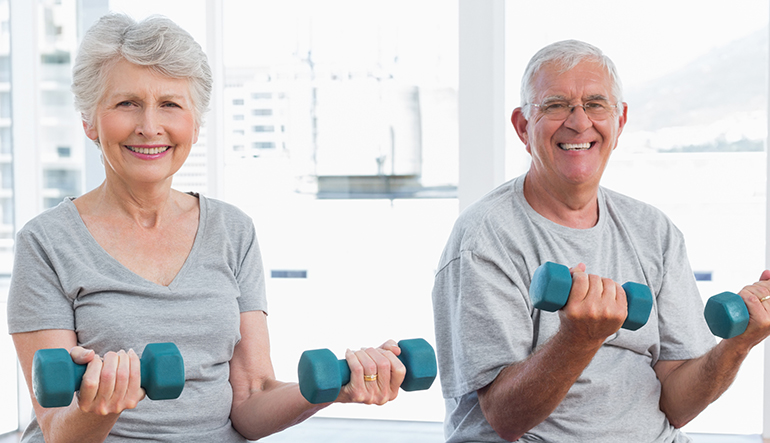
Dr. Grace Park shares about seniors health and how to get started on an exercise program.
Fraser Health was asked: I would like to be more physically active but I don't drive anymore and I use a walker, so it's difficult to get to an exercise class. How can I stay fit?
Dr. Grace Park, Fraser Health program medical director, says: There is no reason frailty has to be a natural part of getting older. With a simple exercise program – even in your home – you can retain your vitality, strength, energy and sense of well-being.
There are many safe, simple exercises that can be done at home by almost anybody, at any age. Home-based exercises can improve strength, balance and mental health. Simple activities such as gardening and walking can supplement an exercise program to increase muscle strength and balance. Adding strength training with light weights can improve upper body strength and prevent osteoporosis.
A great online resource – www.seniorexercisesonline.com – is an exercise program specially designed for older adults that can be done in the comfort and privacy of your home.
Adult children or grandchildren have a role to play in helping their senior relatives avoid the very real hazards that increasing frailty can pose.
A sustained regime of exercise can improve muscle strength and balance. That in turn will lead to an improved sense of well-being and confidence to stay actively involved in the community, and ultimately out of the hospital.
Home activity program
You should only do the exercises you feel safe and comfortable doing.
Start slowly. Begin with a few repetitions of one or two activities at a time. Try a few in the morning, afternoon and evening, rather than trying to do all at once. If any activity causes you increased pain or significant shortness of breath, do fewer or stop that particular activity and talk with your doctor. As you get stronger over time, gradually decrease the amount of support through your hands.
Slow toe taps (can also be done sitting)
- Stand facing the kitchen sink. Hold on with both hands.
- Keep heel on floor and lift toes up. Hold. Relax.
- Slowly repeat on the other foot.
- Alternate, repeating three to five times with each foot.
- Gradually increase until you can do this for two minutes.
Progression: Gradually try to decrease the amount of support through your hands.
Up on toes (can also be done sitting)
- Stand facing the kitchen sink. Hold on with both hands.
- Go up on toes with both feet.
- Come down slowly.
- Repeat three to five times if you can.
- Gradually add one more repetition every few days until you can do this 15 times.
Progression: Gradually try to decrease the amount of support through your hands.
Mini squats (small squats only)
- Stand facing the sink with your feet apart. Hold on with both hands.
- Bend knees slightly. Keep your heels on the floor.
- Remember: Do not bend too far – a small squat only.
- Hold for a few seconds if you can.
- Straighten up.
- Repeat three to five times.
- Gradually do one more every few days or week until you can do 15.
Progression: Gradually try to decrease the amount of support through your hands.
Walking on the spot (can also be done sitting)
- Stand facing the kitchen sink. Hold on with both hands.
- Walk slowly on the spot for 10 seconds.
- Gradually increase your time up to two minutes.
Progression: Begin walking in your home for three to four minutes without stopping. Use a mobility aid that you normally use for walking.
Sit to stand
- Sit in a firm chair with arm rests. If needed, position your walker in front of you and lock the brakes. Bring your bottom a little closer to the front of the chair if needed.
- Bring your feet in close to the chair. Put hands on armrests if needed.
- Lean forward and stand up.
- Stand tall for a few seconds, holding onto walker if needed for support.
- Reach back to hold the armrests of the chair, lean forward, and slowly lower yourself to sit down.
- Stand up and sit down three to five times. Do one more every few days or week until you can do 15 at a time.
Progression: Gradually try to decrease the amount of support through your hands until you can stand up and sit down without using your arms.
Alternate leg behind
- Stand facing the sink. Hold on with both hands.
- Lift one leg behind you, keeping knee straight.
- Return to starting position.
- Repeat with other leg. Continue to alternate each leg, repeating three to five times with each. Gradually do one more every few days or week.
Progression: Gradually try to decrease the amount of support through your hands.
